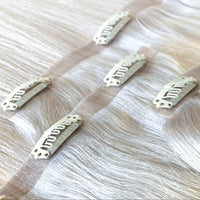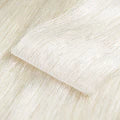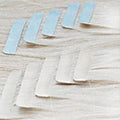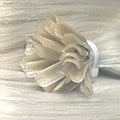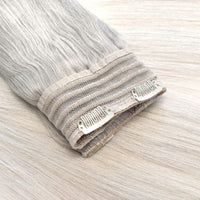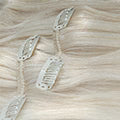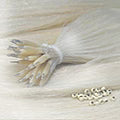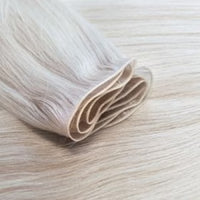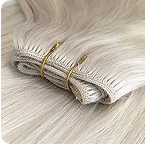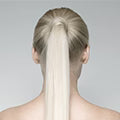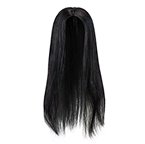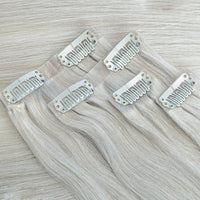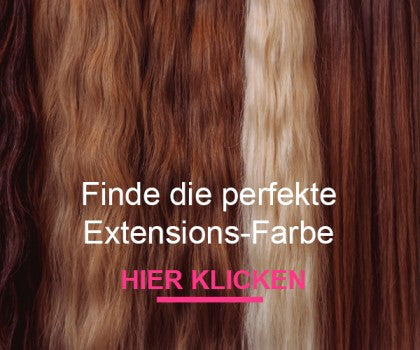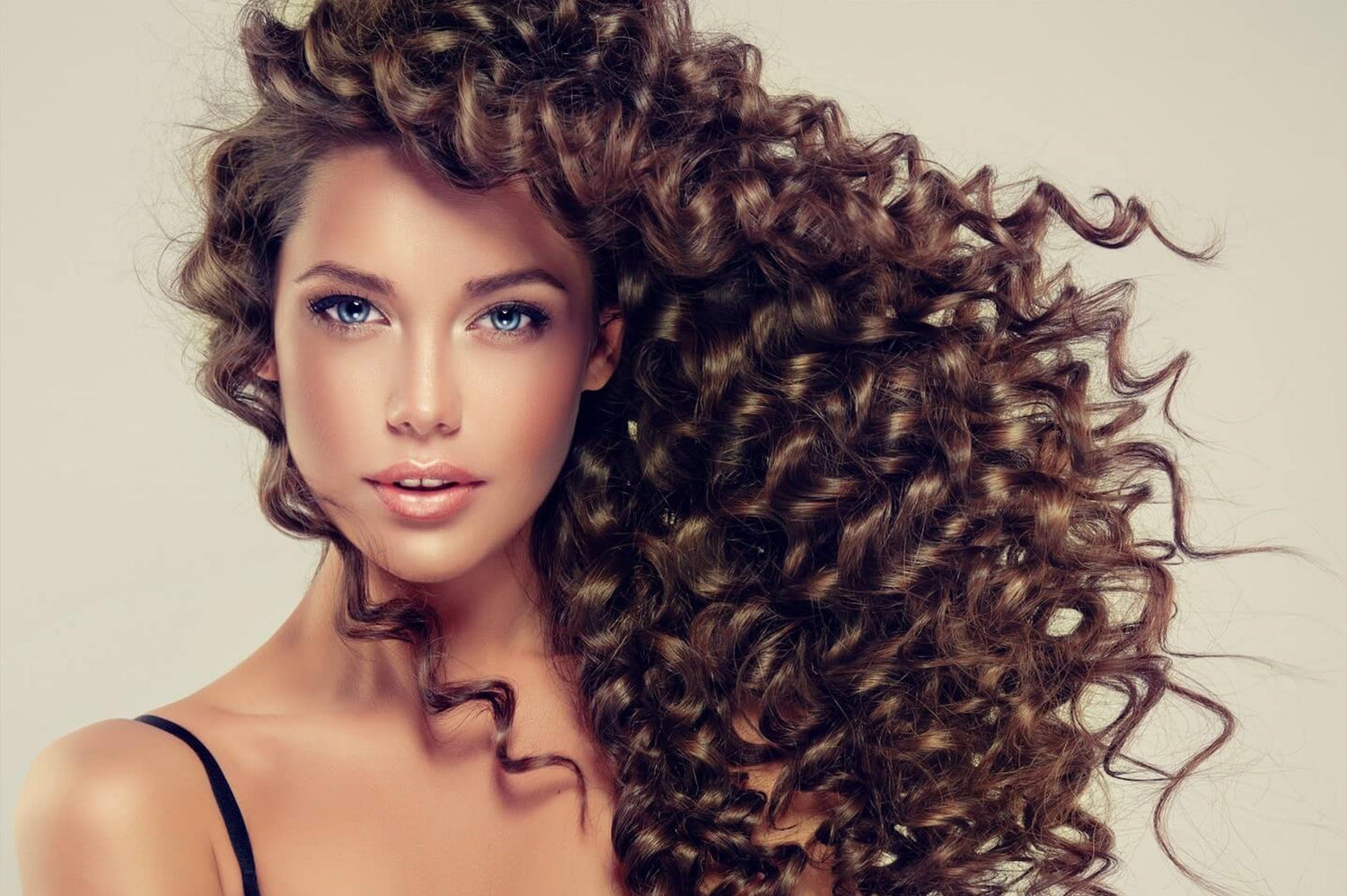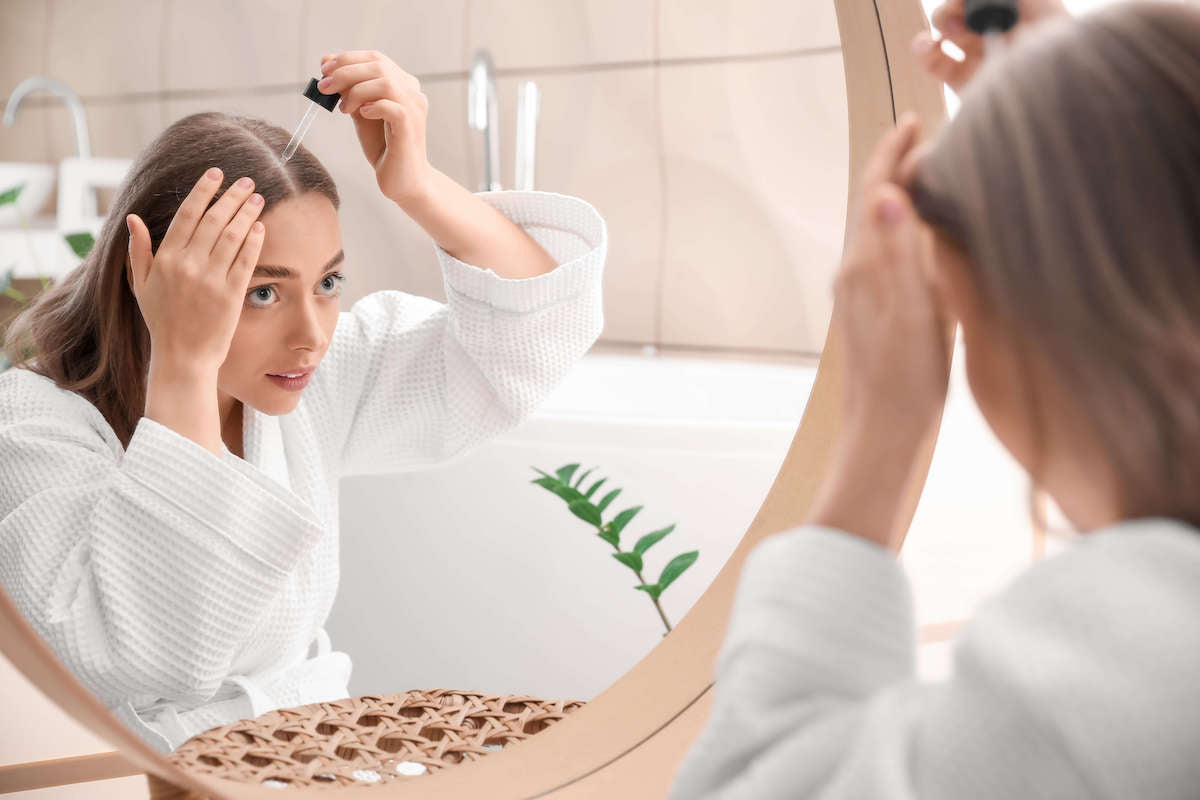Can your extensions be permed?
Extensions have become a popular way to increase hair length and volume in recent years. They offer flexibility and allow you to experiment with different hairstyles without putting strain on your natural hair. One trend that keeps coming up is combining extensions with a perm to create long-lasting curls. But how sensible is it really to do a perm in extensions? In this article, we'll look at why this idea is problematic and what alternatives there are to achieve the desired result.
What are extensions?
Before we get into the topic of perming extensions, it is important to understand what extensions are exactly. Extensions are artificial or natural strands of hair that are integrated into your own hair to lengthen or thicken it. There are various methods of attaching extensions, including clip-ins, tape-ins, keratin bonds and microring extensions. Depending on the material and quality, extensions can be made of real human hair or synthetic fibers.
What is a perm?
A perm is a chemical treatment that creates waves or curls in the hair. The hair is soaked in a perming solution that breaks the disulfide bonds in the hair. The hair is rolled onto rollers and a fixing solution is applied that fixes the new waves or curls. The process is effective, but it is also stressful for the hair, as the chemical treatment severely attacks the hair structure.
Why Extensions Are Prone to Damage
Extensions, especially those made from human hair, have already been through a journey before they end up on your head. Human hair extensions are often chemically treated to disinfect, lighten or dye them. These treatments stress the hair and make it more susceptible to further damage. Synthetic extensions, on the other hand, are made from man-made fibers that are not as easy to shape as natural hair and can be irreparably damaged by heat and chemicals.
The risks of a perm in extensions
A perm in extensions brings with it a number of risks that must be considered:
1. Damage to the hair texture
Chemical treatments such as a perm attack the hair structure. This applies not only to your own hair, but also to extensions. While your natural hair can be regenerated by nutrients from the scalp, extensions are cut off from these nutrients. The chemical substances can dry out the extensions, make them brittle and lead to split ends.
2. Different reaction of the natural hair and extensions
Your own hair and extensions react differently to chemical treatments. It can happen that the perm in your own hair holds well, while the extensions do not take on the curls or take on the curls unevenly. This leads to an inharmonious appearance in which the hair does not look natural.
3. Shortened lifespan of the extensions
Extensions have a certain lifespan, depending on their quality and care. The added stress of a chemical treatment such as a perm can drastically shorten this lifespan. This means you will have to replace your extensions sooner, which incurs additional costs.
4. Problems with hair care
Curly hair needs special care to look healthy and shiny. The same goes for curly extensions. After a perm, it is even more difficult to care for the extensions as they are more prone to dryness and frizz. Using products suitable for curly hair is helpful, but cannot always prevent the extensions from losing their shine more quickly and becoming unsightly.
Alternatives to perming extensions
If you want curly or wavy hair but want to avoid the risks of perming extensions, there are some alternatives to consider:
1. Heat-based curls
If you want to wear your extensions curly occasionally, you can style them with a curling iron or a flat iron. However, make sure to use heat protection products and keep the heat to a minimum to avoid damaging the extensions.
2. Wrapping method
Another gentle way to create curls in extensions is to wrap the hair overnight. You can do this using curlers or soft curlers. The result is natural waves or curls without the use of chemicals or heat.
3. Braiding techniques
By braiding your hair overnight, you can also create gentle waves in your extensions. The waves will vary depending on how tightly or loosely you braid the hair. This method is particularly gentle and can be used again and again.
Tips for caring for curly extensions
No matter which method you choose to style your hair, proper care is essential to extend the life of your extensions and keep them beautiful.
1. Moisturise: Curly hair, including curly extensions, tends to be drier than straight hair. Use moisturising shampoos and conditioners specifically designed for curly hair.
2. Avoid heat: Keep the use of heat tools to a minimum. If you use them, make sure you apply a heat protectant .
3. Gentle brushing: Use a wide-toothed comb or your fingers to detangle curly extensions. Avoid brushing hair when it is wet, as this makes it particularly prone to breakage.
4. Regular deep care: Once a week you should use a deep care treatment to moisturise the extensions and maintain their elasticity.
5. Protection during the night: To protect your curls, wear a silk scarf at night or sleep on a silk pillow. This will reduce friction and prevent the hair from becoming tangled or brittle.
Conclusion
While it may seem tempting to perm extensions, in most cases it is not a good idea. The chemical treatment can cause severe damage to the extensions and significantly reduce their lifespan. Fortunately, there are many alternatives to achieve the curly look you want without putting the extensions at risk. By taking proper care of them, you can ensure that your curly extensions stay healthy and shiny, so you can enjoy them for a long time.
